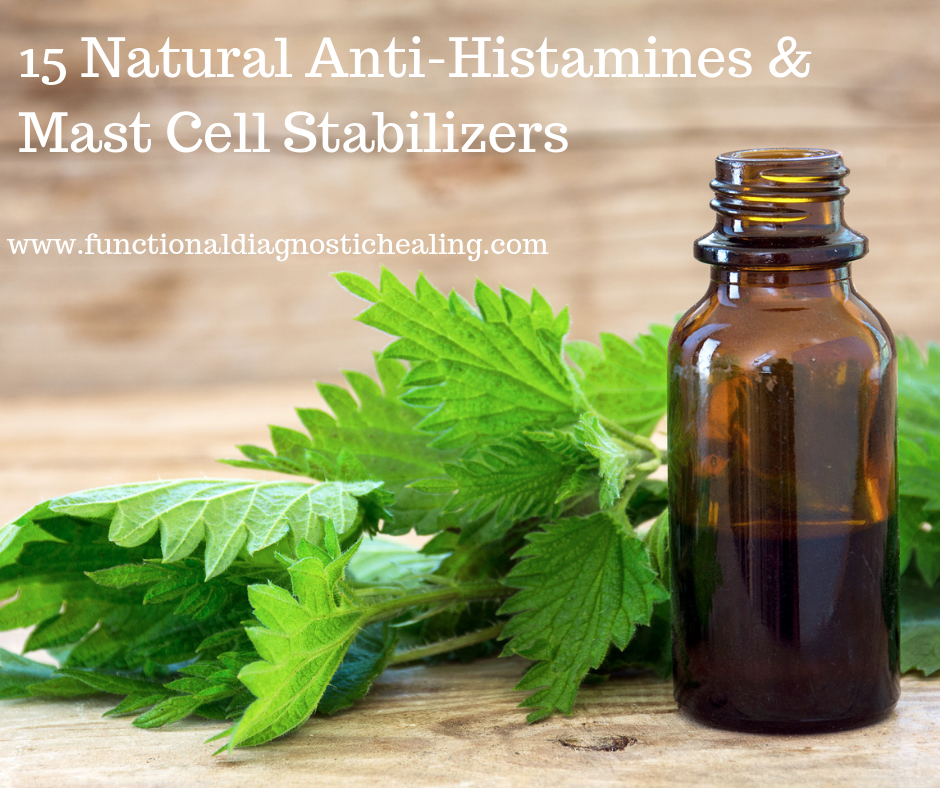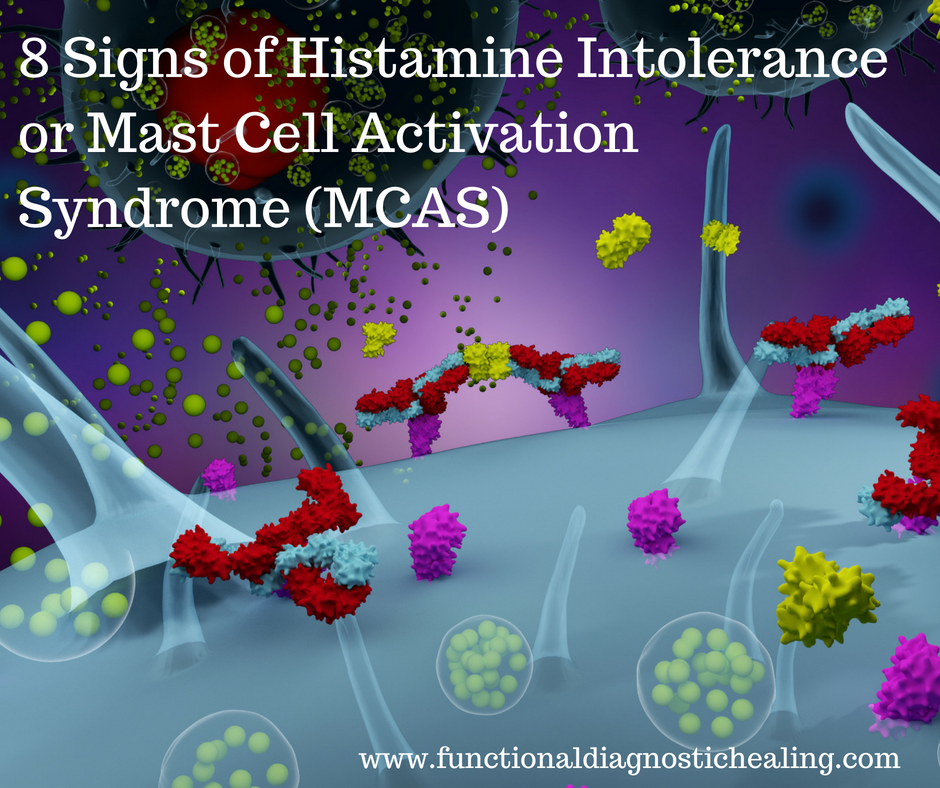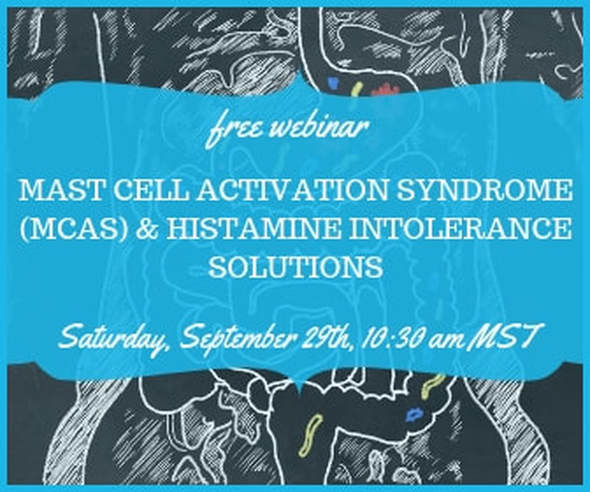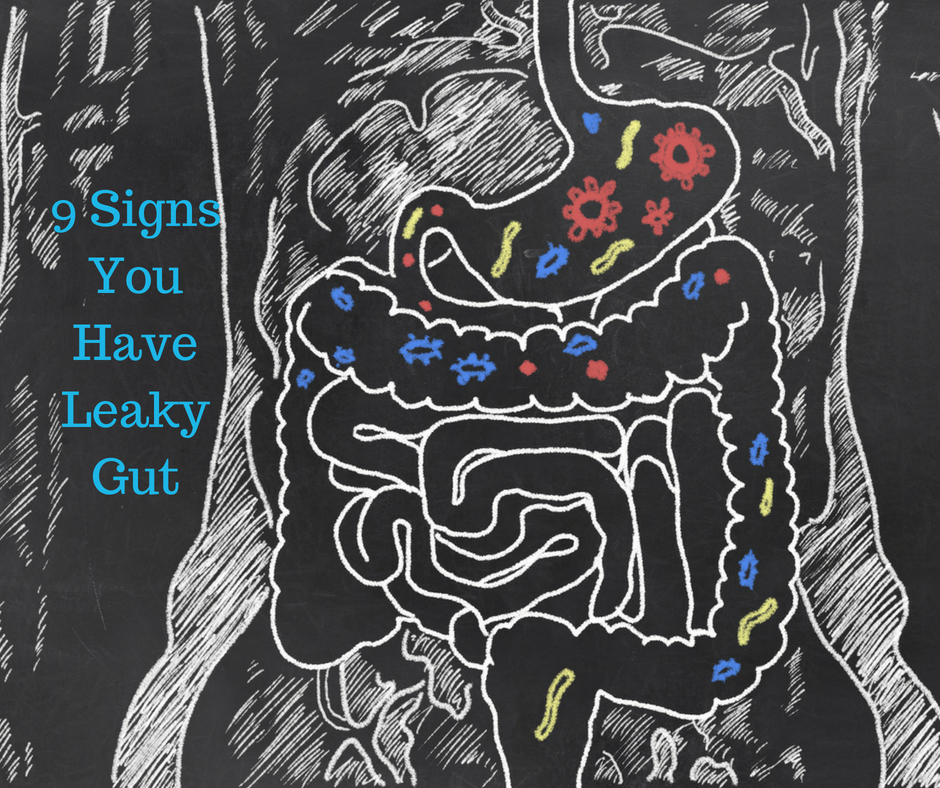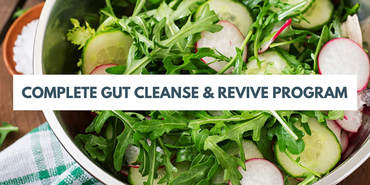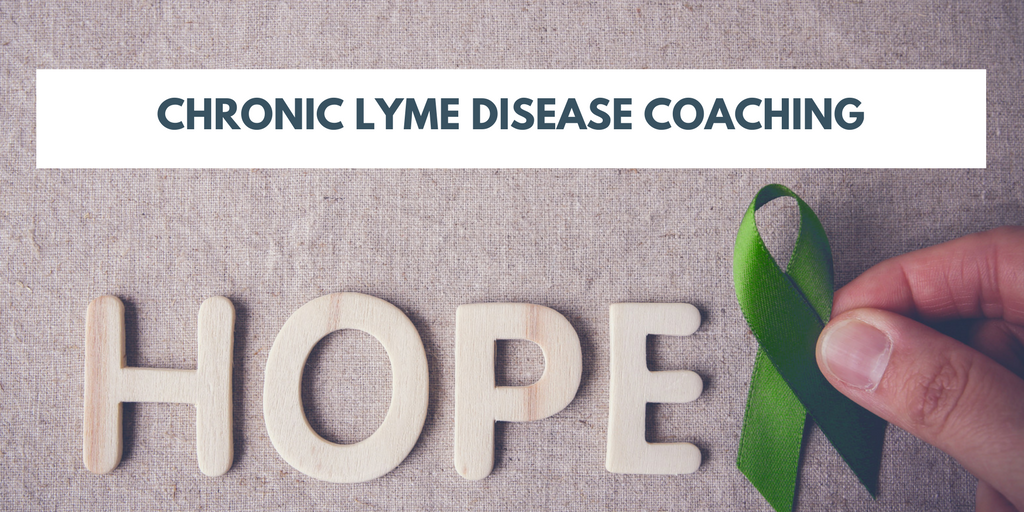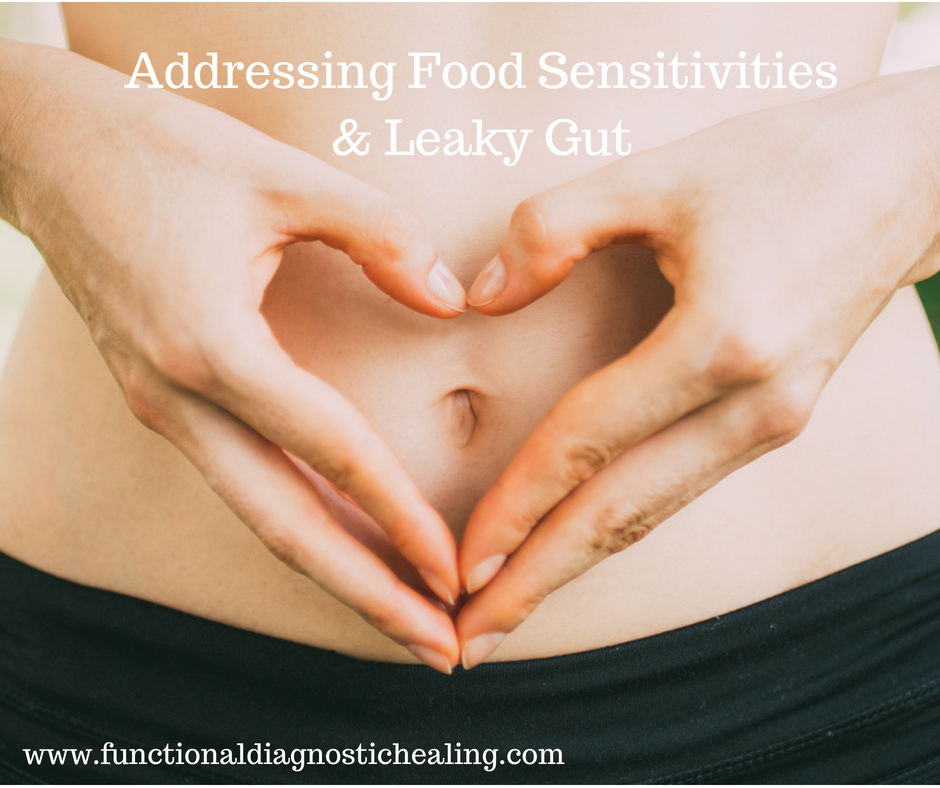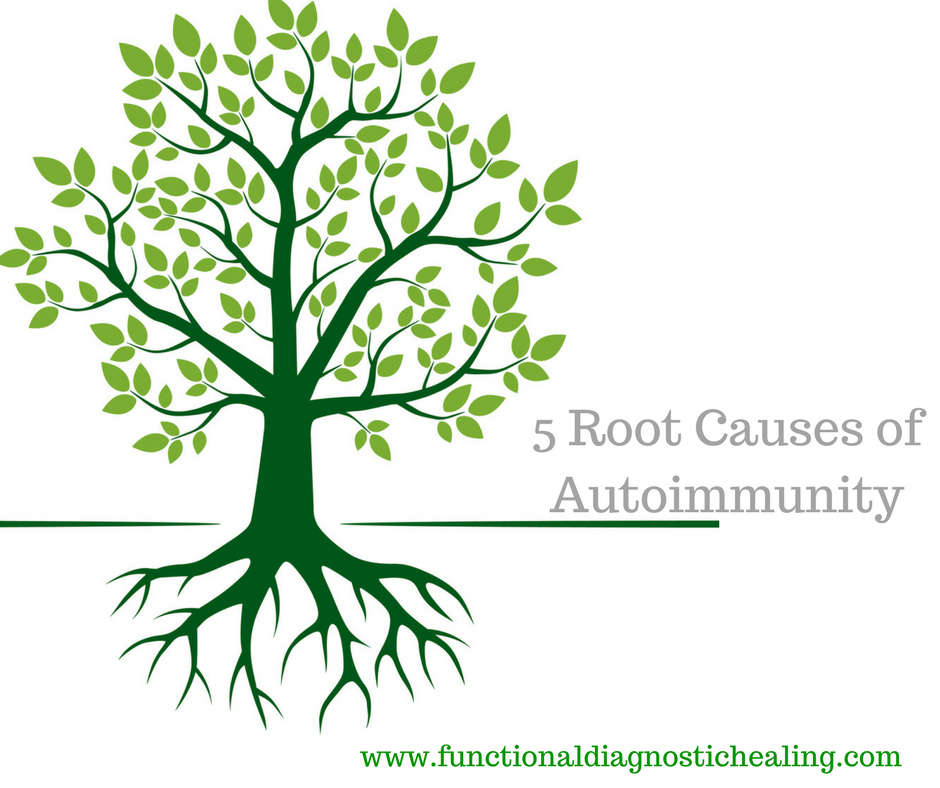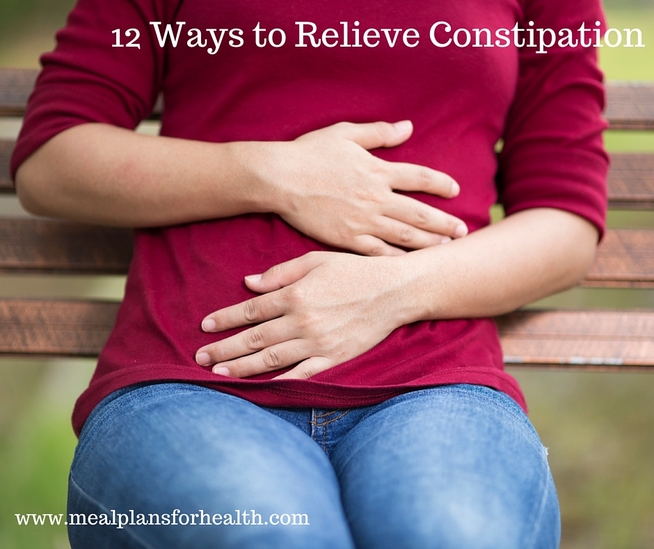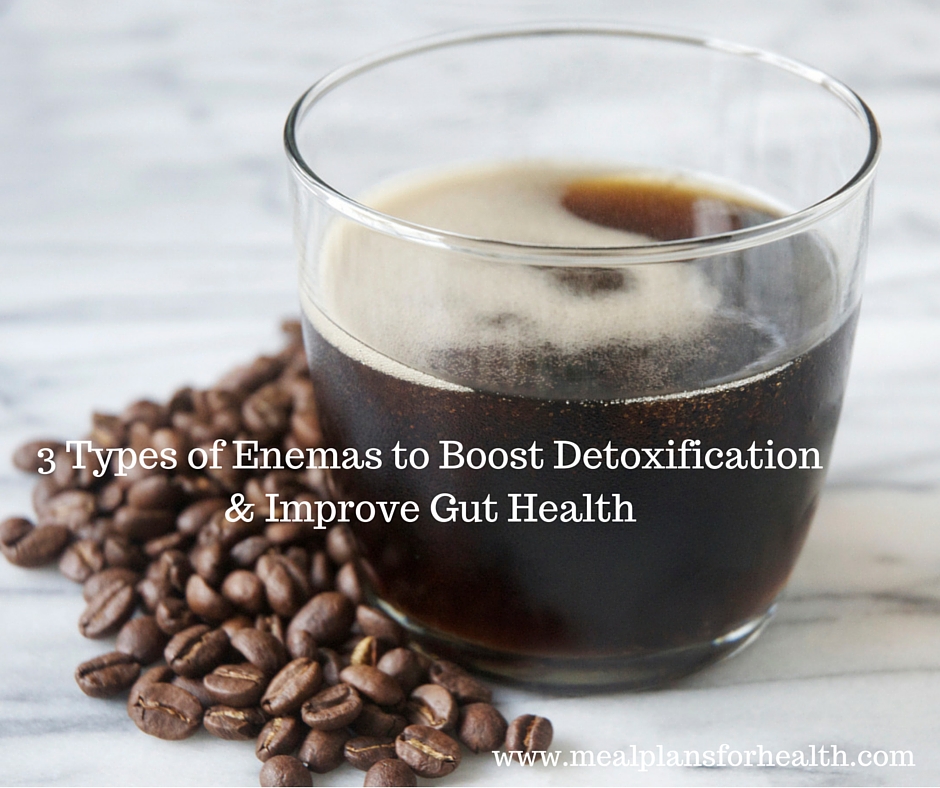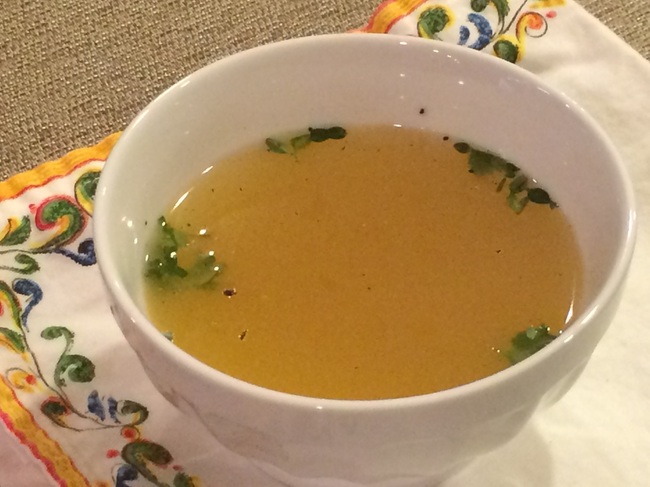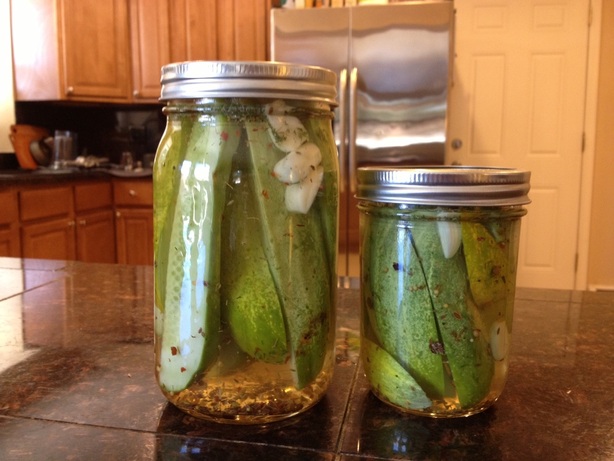|
In functional medicine, we always want to be looking upstream and trying to gather as many clues and evidence through testing and intake to determine what is at the root cause of the chronic symptoms in question. We then work to treat and resolve the underlying problem(s) and this helps to reduce symptoms and restore health long term. But what happens when someone is reacting to or not tolerating the treatment needed to resolve their root cause problems? This is the biggest challenge I see for those who have MCAS and histamine intolerance. Their immune systems are so hyper-reactive and overly sensitive that they will often have trouble tolerating the treatment needed to resolve the root cause issues like parasites, lyme, SIBO, retroviruses, or mold. I experienced this personally when I was being treated for Lyme disease and mold illness aggressively for 2 years before knowing that MCAS was playing a role in my symptoms. My MCAS manifested as extreme body pain, even after 2 years of Lyme disease treatment my pain wasn't getting any better, in fact, it was getting worse!! I also found myself becoming very sensitive and reactive to foods, smells, chemicals, EMF's, and even most of the medications and supplements that were treating my illness. I could not tolerate treatment and was just getting sicker and feeling worse. Figuring out I had MCAS and adding in both pharmaceutical and natural anti-histamines and mast cell stabilizers was a game changer for me. My pain levels dropped slowly, my energy improved, my rashes disappeared and my food reactions lessened. Overtime I finally started to be able to tolerate the treatment I needed to resolve my root causes. After my personal experience and professionally working with lots of mast cell clients, I now understand that its imperative to get the immune system to calm down and be less reactive before you will be able to tolerate treatment for and resolve what's at the root cause of your MCAS. My practice is now 90% MCAS patients and every client is unique in what combination of anti-histamines and mast cell stabilizers work to calm down the immune response and be less reactive. I use special lab testing to help give me clues about each clients bio-individual triggers, metabolism, and root cause issues. This helps me make educated recommendations in the area of natural anti-histamines and mast cell stabilizers that will work for each personal individually. There are some nuances to choosing the right combination of supplements and it often takes some trail and error. This is why I highly recommend working with a practitioner who knows and understands this well to help guide your choices. You will want to choose clean formulations with minimal or no fillers. I suggest single active ingredient items so that you know what is helping or hurting you. If you are someone who has food reactions, you will want to time these items to be taken 15-30 minutes prior to meals. This timing can help to reduce post meal time mast cell reactions. Lastly, never try more than one of these at the same time. Always try anything that is new to you alone with no other changes or adjustments in food or medications, titrate up to the recommended dose (or your tolerated dose) slowly and then add the next item. I typically recommend a 3 day trial before increasing the dose or adding the next supplement. Here are the natural options that I use most in my practice... 15 Natural Anti-Histamines & Mast Cell Stabilizers:
These go-to, natural mast cell stabilizers can be used in combination with pharmaceuticals like ketotifen, cromolyn, singular, and over the counter anti-histamines like Benadryl if needed. I highly recommend working with an experienced practitioner who can help you choose the products that meet your needs best. Always keep in mind these anti-histamines and mast cell stabilizers are not going to fix the underlying, or root problem(s) that are causing the MCA symptoms. They will simply help to lower reactions and calm the immune response down so that you can start to treat the underlying reasons your mast cells are over-stimulated in the first place. If you want to learn more about my approach for reducing MC reactions and improving root cause treatment tolerance and effectiveness, check out my free online webinar. References:
50 Comments
It's been almost 10 years since the onset of the my chronic Lyme disease symptoms following a car accident in 2008 and I can't believe the roller coaster this journey has taken me on! Looking back, there were a few key discoveries and turning points that really shifted my healing into the next level and allowed me to make significantly more progress.
One of those things was figuring out that I was suffering from Mast Cell Activation Syndrome (MCAS). Mast cells are a type of immune cell that are present in almost all tissues in the human body but especially in the gut lining, connective tissue, cardiovascular system, respiratory system, and nervous system. They are part of an allergic response used to protect us from injury or threat. When mast cells encounter a "threat or perceived threat" they release chemical mediators like histamine, leukotrienes, interleukins, prostaglandins, and cytokines. These mediators are like signals to the immune system - you can think of them like a fire alarm, letting the fireman know its time to fight a fire. The mediators are a signal to the immune system that there is threat or injury that needs healing or addressing. We all need mast cells in times of allergic response or injury to heal, however in MCAS, your mast cells are hyper-stimulated and over-activated, releasing large amounts of mediators and setting the stage for chronic immune activation and autoimmunity along with a host of pretty serious multi-systemic symptoms. My MCAS manifested as extreme body pain, even after 3 years of Lyme disease treatment my pain wasn't getting any better, in fact, it was getting worse!! I also found myself becoming very sensitive and reactive to foods, smells, chemicals, EMF's, and even most of the medications and supplements that were supposed to be helping me feel better. I would have constant migraine headaches, my heart would race and my body would feel hot and in terrible pain after I would eat a meal. I was down to like 5 or 6 foods that I could eat without having a reaction. It was incredibly frustrating and I felt so stuck!! When I started to get rashes all over my body (which I had never had prior), my new functional doctor at the time suspected MCAS and we added some anti-histamine and mast cell stabilizers into my protocol. Her suspicion was confirmed when after a month or so, I slowly started to stabilize, my pain dropped a noticeable amount, and I was having less migraines. This is when I took a deep dive into researching and understanding not only the manifestations of MCAS and how to get the immune system to calm down and act normally but also identifying the root causes behind this type of immune activation. The protocols I've implemented based on my research have helped me to accelerate my recovery and live a much more functional life while I continue to heal from chronic Lyme disease. I find that MCAS is a very common condition in the chronically ill and especially so for patients who have not responded to standard treatment protocols well. I've now worked with dozens and dozens of people who suffer from this type of immune dysfunction and I want to help you as well! So how do you know if MCAS might be playing a role in your illness? Here are some clear symptoms to look for... 9 Signs You May Be Dealing with MCAS or Histamine Intolerance:
How Does MCAS Differ from Histamine Intolerance? Histamine intolerance is a term that you may have heard more commonly than MCAS and is typically categorized as someone who is histamine sensitive specifically due to a genetic mutation in which they have a deficiency in the enzyme (DAO) needed to break down histamine in the gut. This causes histamine levels build up and people start reacting to high histamine foods or to environmental stimulus easily. Excess histamine is the main problem here. In MCAS, the mast cells are being over activated which is causing the release of more than just histamine but other mediators as well like cytokines, leukotrienes, interleukins, and prostaglandins. Testing & Treatment to Consider for MCAS: Standard testing includes serum and urine analysis inlcuding: Serum Tryptase, Serum ChromograninA, Whole Blood Histamine (chilled plasma) Heparin (chilled plasma), N-Methylhistamine (24hr urine), and Prostaglandin F2alpha (24hr urine). But again, these tests are not very accurate and will often give a false negative picture. That's why its a clinical diagnosis based on the presence of the symptoms above in at least two body systems and a positive response or symptom reduction with anti-histamines and/or mast cell stabilizers. Next week's blog post will be spent discussing the anti-histamine and mast cell stabilizer options along with tips on how to find the right combination of medications/supplements to help reduce over-active mast cells and get symptom relief. I will also share important steps to take, outside of medications and supplements, that will help to reduce your mast cell reactions and help you get your life back! I look forward to catching you all next week! Thanks for tuning in! Billie P.S. - You may also be interested in my Free, Live Webinar, Mast Cell Activation Solutions, which is scheduled for Saturday, 9/29 at 10:30am MT. Click the image below to learn more or sign up. Hippocrates was quoted saying, " All disease begins in the gut" and today we have mounting evidence showing that many of our modern diseases are in fact rooted in the gut, especially autoimmune diseases, which are affecting more and more people each year. A vast array of chronic inflammatory symptoms ranging from digestive distress, to chronic fatigue, to hormonal imbalances, to joint pain, depression, anxiety, headaches, skin rashes and more are all rooted in the gut.
Studies actually show that over 70% of our immune system resides in the gut and it's also where 80% of our serotonin (the primary neurotransmitter that regulates mood) is manufactured as well. In fact, I've personally experienced how treating the root cause of my leaky gut significantly lowered my depression and balanced my mood! What is Leaky Gut or Intestinal Permeability? The single layer of cells that lines your intestinal track creates a physical barrier between your bloodstream and the outside world. As foods come into your body, they may contain bacteria, viruses, and parasites as well as pesticides. Your gut lining is your first line of defense against these pathogens and toxins. But the lining of your gut can get damaged by inflammatory foods like gluten, toxins like heavy metals and pesticides, pharmaceuticals like antibiotics and NSAID's, as well as pathogenic infections, bacterial imbalances, and stress. A damaged gut lining gets holes in it, for lack of a better term, and you develop what's medically named, intestinal permeability, or "leaky gut". This means that pathogens, toxins, and food proteins can now pass through those "leaks" and into your bloodstream where they interact with your immune cells. The immune system "tags" these food proteins and toxins as "dangerous intruders or pathogens" because they are not supposed to be in the bloodstream and begins to attack them. This immune response leads to the symptoms listed below which is why if you have any of these symptoms, its likely that you have leaky gut. Some experts have estimated that intestinal permeability affects over 70% of our modern population. 9 Signs You Have Leaky Gut:
Leaky Gut - Autoimmunity Connection: When your gut is leaky and more and more particles are able to escape into your bloodstream, your immune system begins to get into a pattern of high alert which causes it to become overstressed and fire less accurately, sometimes leading to an attack on your own body's tissues or an autoimmune attack. Eventually, this will develop into full-blown autoimmunity if your gut is not repaired. In addition, your immune system starts making antibodies against the substances that have escaped into your bloodstream. Many of these foreign invaders, especially gluten and dairy, in particular–look very similar to your own body’s cells, causing your immune system to get confused and accidentally attack your tissues. This process of mistaken identity is called molecular mimicry, and is another way that leaky gut can trigger autoimmune disease. Healing Leaky Gut: If you want to reverse autoimmunity and heal your gut, I suggest working with a skilled functional medicine practitioner who can help you identify all the root causes of your symptoms and take you step by step through a personalized gut healing protocol. You and your practitioner will need to identify and remove all the inflammatory dietary and lifestyle items that are contributing to your intestinal permeability like food sensitivities, toxic exposures, and stress. You will also need to identify and treat pathogenic infections in the gut, reinoculate your immune system with beneficial bacteria, and lastly provide your gut with the key nutrients it needs to repair the "leaks and holes" in the lining. In my practice, I find that 80% or more of my clients have leaky gut at the root of their chronic symptoms. When we focus our approach towards healing the gut by eliminating inflammatory triggers, rebalancing the gut microbiome, and repairing the intestinal lining, people begin to heal, get rid of chronic symptoms, and get their life back! Are you ready to get rid of your chronic symptoms? If so, I'd love to help you! If you want to learn more about what to expect when working with me- you can schedule a complimentary 15 minute new client session to understand how my root cause approach can help you reclaim your health! Or check out the gut healing programs I offer on my Work with Me page and read testimonials of others who have worked with me. In good health, Billie Did you know that unlike food allergies, which tend to be very obvious, food sensitivities can go unnoticed and unidentified while silently wrecking havoc on your health?
Food allergies are typically quite obvious with symptoms occurring immediately or within a short period of time after exposure. This would represent an IgE reaction of your immune system. For example, someone who is allergic to peanuts may have their tongue or throat swell up with exposure and need immediate care. Food sensitivities on the other hand, are often dose dependent and include delayed reactions, occurring anywhere from 1 to 72 hours post exposure. They include IgG reactions as well as mediator release from white blood cells including: histamine, leukotrienes, cytokines, prostaglandins, and interleukins just to name a few. In fact mediator release is the key event that increases systemic inflammation and leads to chronic symptoms like: brain fog, pain, fatigue, digestive distress, headaches, rashes, anxiety, depression, insomnia, weight gain, and more. Even so called "healthy" foods like broccoli, avocado, garlic, or blueberries, for example, can become triggers that lead to unwanted and chronic symptoms. This truely brings to light the saying that "one woman's food is another woman's poison." Theses inflammatory reactions to foods create a viscous cycle in that they contribute to increased intestinal permeability (or leaky gut) while also being a direct root cause of the symptoms of inflammation. When your gut is permeable, it has small holes or "leaks" where food proteins that are normally kept inside the gut can now enter the bloodstream. This activates the white blood cells in your immune system to release mediators which lead to the chronic and unwanted symptoms of systemic inflammation listed above. Removing foods that you are reacting to is the first and most important step in healing the gut, reducing intestinal permeability, and decreasing those chronic symptoms. You will not be successful healing the gut without removing these foods because of the fact that mediator release makes the gut more permeable, continuing this viscous cycle. How to Identify Food Sensitivities: So what can you do about it? In my practice, I almost exclusively use the MRT (mediator release test) which is a blood test that measures volumetric changes in mediator release to help us identify which foods that you are specifically reacting to and which foods are the safest for you. I find that this test is the most clinically effective because it is measuring the same mediators that raise systemic inflammation. Once we identify the foods causing you the most inflammation, we remove those foods from your diet for at least 90 days. I find that almost all of my patients experience a significant reduction or elimination in their chronic symptoms when we do this. I have personally had huge success using this test to identity my own sensitivities and it was one of the key pieces that has allowed me to start to heal my gut and reverse my crippling, reactive symptoms. You can learn more about the MRT Test on their website by clicking here. If you want to know which foods could be contributing to your chronic symptoms and are looking to heal your gut and reverse your autoimmunity, I'd love to help you! You can learn more about working with me here. And you can read some testimonials from others who have worked with me here. I hope you have found this information to be helpful. Feel free to post questions below or contact me directly here. In Good Health, Billie Did you know there are 70-80 million people in the U.S. alone that are suffering with an autoimmune disease and up to 150 million people worldwide? These numbers have increased threefold over the last 50 years and are continuing to rise.
What is Autoimmunity? Autoimmune disease is a whole spectrum of illnesses that all have common root causes, even when they show up in different parts of the body. The commonality among these illnesses is that the body is attacking its own tissues. This can happen when our immune system no longer recognizes our own cells as safe, it identifies them as harmful intruders and launches an attack against them. There are many things that can change the shape and appearance of your cells which is what's at the root cause of these chronic illnesses. The traditional western medicine approach to these illnesses to prescribe steroids and other immunosuppressant drugs to reduce the immune system's response. They are focused on "diagnosing" your illness and then "treating" you with pharmaceuticals to reduce symptoms. These drugs to do not to anything to cure or reverse your illness or help you heal, they are simply "masking" the symptoms of your illness at best. And they come with horrible side affects like a insomnia, depression, and immune deficiency making you more likely to get infections that will only make you sicker. As someone who was diagnosed with 3 different autoimmune conditions by 3 different specialists, I understand just how frustrating and hopeless it is be given a diagnosis(s) without any answers as to the known cause. That's why I became a Functional Diagnostic Nutrition Practitioner so that I could figure out my own answers, reverse my illness, and help others do the same. In Functional Medicine, our approach is to ask the questions, "why are you sick?", "why did you develop this set of symptoms or this illness?", "what is at the root cause of this illness?". What we find when we ask these questions is that regardless of the type of symptoms that are being expressed or the type of autoimmune disease that has been diagnosed, there are common things that we find at the root cause of every autoimmune condition. 5 Root Causes of Autoimmunity:
The good news is that once you know the underlying cause(s) of your condition, you can truly support your immune's system ability to heal itself. In my practice I use special functional lab work to identify what's at the root cause of your autoimmune condition and then design a personalized dietary, nutrient replenishment, and lifestyle protocol to help lower inflammation and slow or reverse autoimmunity. So if you are sick of being sick and tired of not having answers as to the development of your condition, check out my approach and read about what it's like to work with me,. If you like what you see, consider a 15 minute free consultation to learn how to identify the underlying causes of your autoimmune condition and get rid of chronic symptoms that dominate your daily life! As much as 1/3 of the U.S. population suffers from chronic constipation, or the inability to have at least one bowel movement everyday. Do you eliminate everyday or 5-6 days a week at the very least? If you answered, "No" to this question, you are gonna want to continue reading.
Warning...personal disclosure ahead...I've suffered from chronic constipation my entire life. I constantly felt bloated and had a painful, swollen belly almost everyday. I remember suffering through classes, meetings, flights, exercise and sporting events, and even social engagements with horrible stomach pain dying for the moment I could go home, get in my p.j's and curl up in the fetal position in bed! Constipation prevented me from feeling good about my body, prevented me from losing weight, and left me feeling constantly tired, sluggish, and depressed. Can you relate? I worked with and was evaluated by several doctors over several years including a gastroenterologist, endocrinologist, gynocologist, and an internal medicine doctor. I was given an IBS diagnosis and was told it was likely I would have this problem most of my life and that laxatives, fiber in the form of Metamucil, and pharmaceutical medications were my best "treatment" options. I used some of these remedies on and off for several years but was never able to overcome my constipation. Around the time I turned 30 I decided to do a 30 day detox with a friend which required eating only whole, unprocessed foods and juicing daily. I noticed that after a couple weeks on this diet, I had not only dropped 10 pounds but was also FINALLY eliminating EVERYDAY! By the end of the 30 days, I had said goodbye to chronic constipation, bloating, pain, and embarrassment and was determined to stick to a whole-foods based, anti-inflammatory diet. I was so inspired by my experience that a couple years later I changed my career, went to back to school, and become a Functional Nutrition Health Coach so that I could help others rid themselves of this and other chronic symptoms that keep them from enjoying their daily life. You don't have to live with constipation and you don't have to take pharmaceutical medications or daily Metamucil to have regular bowel movements! Check out this week's What's That?! Wednesday post where I share my top tips and home remedies for relieving chronic constipation. 12 Tips for Relieving Constipation:
What other home remedies work for you? I'd love to hear your constipation remedies as well as any questions or feedback below. Thanks for tuning in and catch ya next week friends! ~Billie DISCLAIMER: Please be sure to inquire about all nutritional supplements and home remedies with your physician or healthcare practitioner to make certain there are no contraindications with medications, etc. The information shared here should not be seen as medical or nursing advice and is certainly not meant to take the place of your doctor's recommendations. If you are pregnant or breastfeeding, please check with your doctor before adjusting any of your medications or supplements. DO NOT do enemas or castor oil packs if you are pregnant or breastfeeding. Always consult with your physician before making any changes. I've shared some of my personal health battle against Late Stage Chronic Lyme Disease on and off on this blog. And since May is Lyme Disease Awareness Month, you will be hearing a bit more about my journey and how I'm slowly healing from this devastating illness. Along the way, I hope to provide some insight into some of the daily at home, self-care, and detoxification remedies that I use to keep myself healing physically, emotionally, and spiritually.
I strongly believe that you cannot heal from this disease or any chronic illness with just medications alone. You've got to dig down deep, make some sacrifices, implement changes, and make commitments to yourself to really heal from chronic illness. When your body has been chronically ill, it is toxic and supporting your body to appropriately eradicate those toxins is a must do or you simply will not get well. While your doctor or other practitioners may suggest or prescribe medications, supplements, or herbal remedies that will be helpful in this area - this is simply not enough for someone who has been ill for a very long time. This is where the expert help ends and you are the one with the responsibility to treat and support your body in a healing way. It's a choice you have to make everyday. But...a daily practice of detoxification and relaxation strategies can very hard for someone who is ill to implement. I totally get it! This is a learned practice, especially for those who are used to putting others needs before their own. I have to continually motivate myself and "keep myself in check" to stay on track and make sure I have dedicated the time to focus on my self care. One way I do this is by making my daily self care strategies my first priority. For example, I often start my day with some yoga stretches, followed by doing a castor oil pack while listening to a guided meditation. I also block off time to take a detox bath about 5-7 days a week in the afternoon or early evening to help my body unwind from my day. I usually incorporate my EFT and positive affirmations during bath time as well. Yes, I'm still a "multi-tasker" at heart:) Then some days I will also do a coffee enema or an ionic foot bath. These are my weekly self-care rituals I try to stick to...am I perfect? Absolutely not! But if I miss a day or don't do all of it one day I try not to beat myself up. Tomorrow is a new day to chose healing, choose positivity, and choose putting myself first! The longer I've been dedicated to these types of practices, the easier they are and the more I look forward to doing them rather than having to make myself do them. This has taken me almost 3 years to slowly incorporate these practices regularly, but if I can do it, so can you! Last week, I shared my 10 Self-Care Practices to Promote Healing & Relaxation and this week's post is dedicated to one of the at home detoxification practices I use weekly: enemas! To be very honest, getting started with this practice was very hard for me - doing ENEMAS, sounded a bit scary and overwhelming to me. This may be something many of you are thinking right now as well! But I did it and cannot say enough how much this practice has helped me to decrease my toxic load and reduce my die-off symptoms and flares from treatment. Big shout out to my fellow Lyme warrior's and friends - Christie & Shelly for inspiring me to start these about a year ago! Love you ladies! So....in this week's What's That?! Wednesday post, I share my top three favorite home enema remedies, the benefits of each and how to do them! Check it out... First, Here is What You Will Need to Do an Enema at Home:
3 Types of Enemas to Boost Detoxification & Improve Gut Health:
How to do an Enema:
Each time you do these they will get easier and easier and you will feel better and better. Remember, you are the one that gets to make the choice everyday to support your body to heal or prevent your body from healing. Choose yourself, choose positivity, choose healing! Are enemas something you do regularly? What benefits have you seen? What types are your favorite? I'd love to hear your experiences and stories in the comments below! Happy healing friends! ~Billie DISCLAIMER: Please be sure to inquire about all home remedies including enemas with your physician or healthcare practitioner to make certain there are no contraindications for you. The information shared here should not be seen as medical or nursing advice and is certainly not meant to take the place of your doctor's recommendations. If you are pregnant or breastfeeding, I highly advise not doing enemas of any kind. Always consult with your physician before making any changes. If you are not already making your own bone broth, I'm going to give you several reasons why you should consider starting. Not only is it inexpensive to make, but it's also one of the worlds most nutrient dense foods. Bone broth is packed with highly absorbable forms of calcium, magnesium, potassium, phosphate, sulfur, and a variety of amino acids, as well as collagen, glucosamine, and condrointin. These nutrients support our immune system, calm and heal digestive distress, and nourish our musculoskeletal system just to name a few.
Bone broth has affectionately been referred to as "Jewish penicillin" because of it's amazing healing and health promoting benefits. Did your mom ever make you chicken soup when you were sick? Most of us have had that experience more than a handful of times. It comes of course from generations and generations of people from all over the world making this very traditional healing and inexpensive food for decades and decades. I often consume bone broth for breakfast or as a snack with just some fresh herbs and diced raw veggies of choice. But you can also use it in your soups, stews, casseroles, and much more to add flavor and a boat-load of nutrients to your meal! I started making my own bone broth regularly last year when I started treatment for chronic Lyme disease to help support my gut health while taking antibiotics and to nourish and support my immune system. But the benefits of bone broth go way beyond these two things...check it out... Health Benefits of Bone Broth:
How To Make Bone Broth: Ingredients: 3 pounds organic chicken or turkey bones or carcass** 12-16 cups filtered water or enough to cover all ingredients (depending on how big your pot or slow cooker is) 2-3 tablespoons organic, raw apple cider vinegar 1 large onion, not peeled, quartered 2 stalks celery, quartered 2 large carrots, peeled and quartered 2-3 inches ginger root and/or turmeric root (optional - for an extra Anti-Inflammatory boost!) 1 bunch parsley 2-4 sprigs fresh thyme, tied together kitchen twine Directions:
I like to just add some Pink Himalayan sea salt and fresh parsley and drink it down!! If you've done this all correctly, your broth will most likely gels or congeals after you've had it in the fridge for a half day or so. Don't worry! This is a good sign that your broth is packed with collagen and all the other healing nutrients. Just re-heat and it will go back to a liquid broth consistency. If you can't find bones or don't have time to make broth, you can also make stock, which is has less collagen and gelatin but will still give you lots of protein and minerals in your final batch. For stock, follow the same directions except use a whole chicken or bones with meat on them instead of just the bones. Then you only cook it for 3-4 hours versus 12-24 for the bone broth. If you have more than 3 pounds of bones, this recipe is easy to double and I highly recommend making as big a batch as your pot or slow cooker will allow. You can store broth in a freezer safe container in the freezer for up to 3 months. **You can buy chicken bones, feet, and other organic bones at places like Whole Foods. OR make friends with the butcher at your local grocery store and ask for bones and even feet (the feet have extra collagen). It is also super important to get your bones from an organic bird as these will yield MANY more nutrients and not be contaminated with added hormones or antibiotics. You could also opt for organic, grass-fed and finished beef or lamb bones for a different flavor and nutrient profile. Happy soup slurping friends... ~Billie If you are looking for an easy way to use up those cucumbers (and fresh dill) coming out of your garden, try this simple recipe for Sweet & Spicy Refrigerator Dill Pickles.
Ingredients: 6 pickling cucumbers 2 cups water 1 3/4 cups distilled white vinegar 1 cup packed, coarsely chopped fresh dill 1/2 cup sugar 8 cloves garlic, halved 1 1/2 tablespoons coarse salt 2 tablespoons pickling spice mix* 1/2 teaspoon dried red pepper flakes (more or less depending on your desired spiciness level) *Some grocery stores do not carry pickling spice, so if you cannot find it, substitute for 1 tablespoon plus 1 teaspoon dill seeds, 1 teaspoon whole black pepper corns, and 1 teaspoon caraway seeds. Directions: 1. Combine all ingredients, except dill, in a large bowl. Let stand at room temperature for about 2 hours or until the sugar and salt dissolve. 2. Quarter each cucumber into spears and then place in wide-mouth jars. You will need about 3 jars depending on the size of your cucumbers and the sizes of your jars. 3. Pour vinegar/spice pickling mixture evenly into each jar. 4. Cover jars with lids and close tightly. Refrigerate for 2 weeks. These will stay fresh for 1 additional month following the 2 week 'pickling time'. Keep refrigerated and enjoy! ~Billie 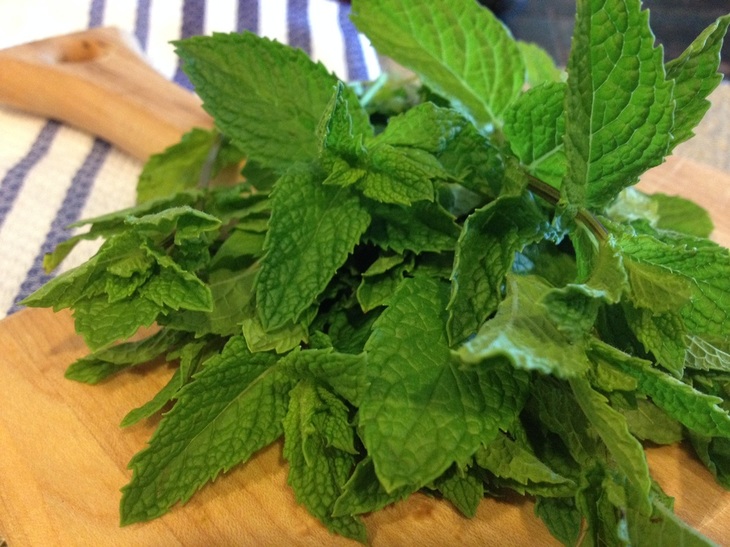 Did you know mint has one of the highest antioxidant capacities of any food? Its true...in fact all those potent antioxidants add up to some great health benefits that we'd like to share with you in this week's edition of What's That?! Wednesday. Mint or "mentha" in a genus group of about 15-20 plants - some of the most common ones are those we see in our grocery stores like peppermint and spearmint. If you've never really used it, here are a host of reasons why you should consider incorporating it into your diet. Health Benefits of Mint:
You can incorporate fresh mint into your diet in many ways. It is used more heavily in ethnic dishes like Thai and Greek meals, but I love to use it during the summer with fresh fruits and vegetables. You can add freshly chopped mint to fruit salads, green salads, roasted vegetables, curries, stir fries, herbal teas, or adult beverages. Check out a few of our favorite recipes: Summer Herbal Mint Iced Tea Roasted Vegetable Tabbouleh Seasonal Fruit Salad with Citrus-Mint Dressing Mint Chocolate Chip Green Smoothie So what are you waiting for? Go grab handfuls of mint from your garden and get cooking! ~Billie |
Billie Shellist, FDN-P
I practice functional nutrition, an approach that allows me to look at your entire health history and help you find the "root causes" of your chronic health complaints. This cuts out the trial and error process and helps you get real symptom relief and resolution! Food is medicine and knowledge is power -I hope you enjoy my anti-inflammatory recipes which are gluten, dairy, and soy free as well as very low grain and sugar. If you'd like to heal from the root cause(s) of your chronic symptoms, try starting with a complimentary 15-minute consultation. Click here to request your free session. |

